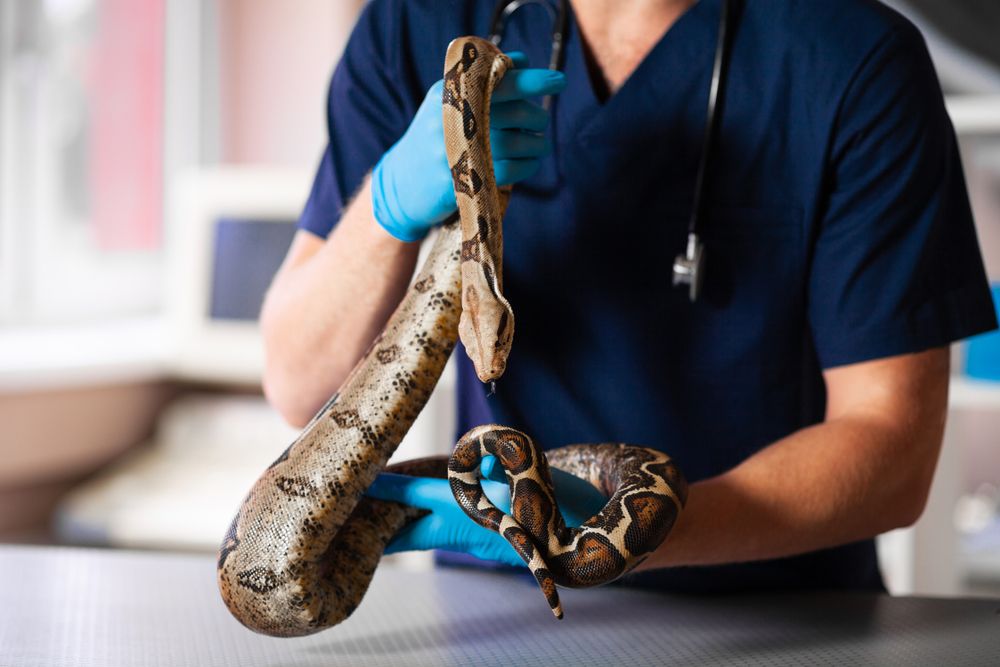Pet Snake Species: Care Guide for Beginners
Guide or Summary:Selecting the Right Pet Snake SpeciesSetting Up the Perfect EnclosureFeeding and NutritionHealth and SafetyPet snakes have become increasin……
Guide or Summary:
- Selecting the Right Pet Snake Species
- Setting Up the Perfect Enclosure
- Feeding and Nutrition
- Health and Safety
Pet snakes have become increasingly popular in recent years, with many individuals seeking to add a unique and fascinating companion to their homes. However, for beginners, the world of pet snakes can be intimidating. With so many different species to choose from, it can be challenging to know where to start. This comprehensive care guide is designed to help novice snake owners navigate the exciting world of pet snakes, ensuring that they can provide a safe and enriching environment for their new scaly friend.
Selecting the Right Pet Snake Species
When choosing a pet snake, it's essential to consider your lifestyle, living space, and personal preferences. Some popular pet snake species include corn snakes, ball pythons, and boa constrictors. Each species has unique care requirements, so it's crucial to do your research before making a decision.
Corn snakes are a great choice for beginners due to their docile nature and relatively low maintenance requirements. These snakes are primarily terrestrial and can be housed in a relatively small enclosure. They require a diet of mice and are relatively easy to care for.

Ball pythons are another popular choice for pet snakes. These snakes are known for their docile nature and are relatively easy to handle. They require a larger enclosure than corn snakes and are primarily arboreal, so it's essential to provide plenty of climbing opportunities. Ball pythons are also relatively easy to feed, as they can be trained to eat frozen mice.
Boa constrictors are a more advanced option for pet snakes. These snakes are larger and more aggressive than corn snakes and ball pythons. They require a spacious enclosure and a varied diet, including rodents and birds. Boa constrictors can be challenging to care for, so they may not be the best choice for beginners.
Setting Up the Perfect Enclosure
Once you've chosen your pet snake species, the next step is to set up the perfect enclosure. The enclosure should be large enough to accommodate your snake comfortably, with plenty of space for them to move around and climb. It's essential to provide a secure lid to prevent your snake from escaping.
The substrate in your enclosure should be appropriate for your snake's species. For example, corn snakes prefer a substrate of aspen shavings, while boa constrictors may require a substrate of coconut fiber or pine shavings. It's also essential to provide hiding places and climbing opportunities to keep your snake happy and healthy.

Feeding and Nutrition
Feeding your pet snake is an essential part of their care. The type and frequency of feeding will depend on your snake's species and age. Most pet snakes require a diet of mice, rats, or birds, depending on their size and nutritional needs.
It's essential to provide fresh water at all times and to clean the enclosure regularly to prevent the buildup of bacteria and mold. Additionally, it's crucial to handle your snake with clean hands to prevent the spread of disease.
Health and Safety
As with any pet, it's essential to provide regular veterinary care for your pet snake. Regular check-ups with a qualified reptile veterinarian can help ensure that your snake stays healthy and happy.
It's also essential to handle your snake with care to prevent injury. Snakes can become stressed or defensive if they feel threatened, so it's crucial to approach them slowly and calmly.

In conclusion, keeping a pet snake can be a rewarding experience, but it's essential to do your research and provide the appropriate care for your chosen species. By following this comprehensive care guide, beginners can provide a safe and enriching environment for their new scaly friend, ensuring that they thrive in their new home.